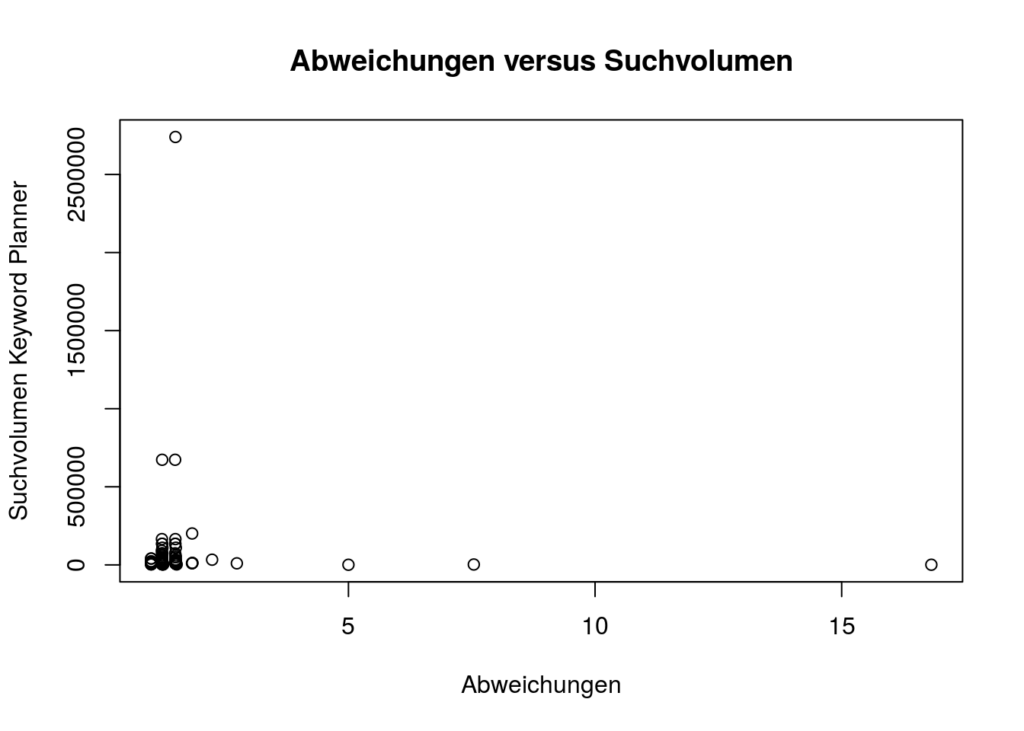Since the Google AdWords Keyword Planner only spits out granular data for accounts with a sufficient budget, the search for alternatives is great. Rand Fishkin believes that Google Trends is the salvation, but apparently has not understood that Google Trends provides normalized, indexed, as well as keyword-enhanced data and not absolute numbers. But he is right on one point, even the Keyword Planner does not really provide accurate data, as I found out in this article.
Of course, this is an unsatisfactory situation. No wonder alternatives like keywordtool.io are popular. But how accurate is their data? Because I haven’t found any indication of where they got the data from, and that makes me very suspicious at first. Where would they get the data from if not through the API? And here access is limited. On the initiative of my esteemed colleague Christian, I then took a closer look at it. On the one hand, he asked where keywordtool.io got the data from (there was no satisfactory answer to this). On the other hand, he got a test account: A first pre-test brought disappointing results, the numbers were completely different from those of AdWords. However, the colleague was no longer sure whether he had chosen the same settings as I had in AdWords, so I did the test again on my own.
In the case of the first keyword set from the pedagogical sector, the surprise after the pre-test was great: With a few exceptions, all keywords had the exact same search volume. The few exceptions were that keywordtool.io didn’t spit out numbers, but Keyword Planner did. However, this was only 2 of almost 600 keywords. The second keyword set on the subject of acne also showed the same picture. The search volumes were exactly right, with a few exceptions. Interestingly, both keyword sets were more about topics that did not necessarily stand out due to high search volume, in some cases we are talking about 20 search queries per month. It is therefore very likely that the Google AdWords API will be tapped directly here, otherwise these exact figures cannot be explained. This would also explain why you can only query 10 sets of a maximum of 700 keywords (more than 700 keywords are not possible with Keyword Planner either, but more than 10 per day). So keywordtool.io would be a good alternative… if not…

The third keyword set then showed a different picture, the deviations are dramatic. In contrast to the previous keywords, we are talking about high volume keywords such as . Unfortunately, there is no pattern to be seen, as you can see on the plot, except for the pattern that keywordtool.io is always higher and never lower. Keywords with high search volume can be just as wrong as keywords with low search volume. It’s also not that it’s always the same variance, we’re talking about keywords where the numbers fit exactly, and keywords that have a variance of 16 times the volume reported by Google. There is also no order in any way. The deviations are completely random. And they are far too big to ignore.
Of course, this will not stop many from using keywordtool.io anyway, after all, you like to say to yourself “yes, it usually fits” or “It’s better than nothing”. Whether it’s really better, I’ll question that. I wouldn’t want to make decisions based on such deviations. The Keyword Planner is the better option, even if it only delivers staggered values if you don’t have enough budget.
By the way, the data of the third set is available here in an R notebook.